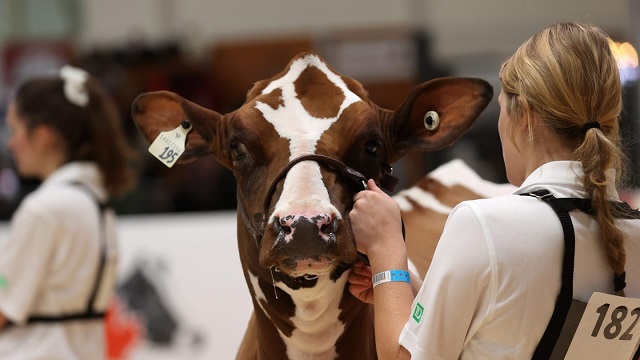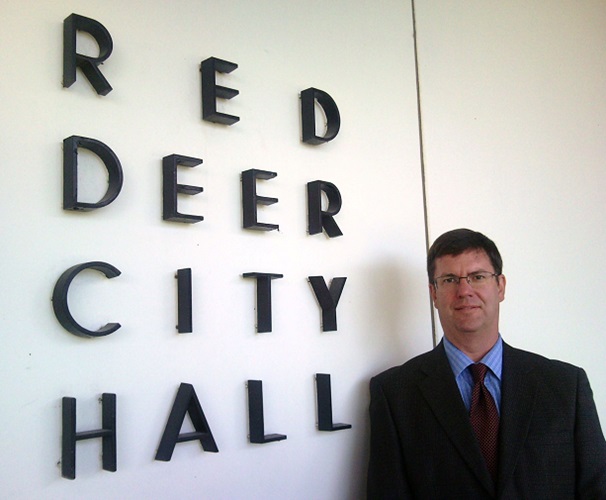Agriculture
A local history of Thanksgiving

By Michael Dawe
Another Thanksgiving holiday will soon be upon us. It is one of the most popular annual family holidays- in some cases, second only to Christmas and New Year’s.
The roots of Thanksgiving go back centuries. The celebration of the end of harvest, and hopefully the security of having enough food for the coming winter, is deeply rooted in agricultural societies. The famous Pilgrim Thanksgiving feast in Massachusetts in 1621 is often cited as the origin of many of the traditions of Thanksgiving celebrations.
There are records of Thanksgivings in Nova Scotia going back to the mid-1700’s. After the end of the American Revolution, Loyalist refugees, who flooded across the border into Canada, brought with them many of the American traditions such as turkey, pumpkins and squash. The dates of Canadian Thanksgiving fluctuated over the years, often being held between mid-October and early November. In 1879, the Canadian Parliament proclaimed the first national Thanksgiving Day on November 6.
A tradition of setting the date of Thanksgiving by annual proclamation, by the Governor General, continued for many decades. However, local celebrations continued to be determined by the state of local harvests. Also, Thanksgiving generally had a strong religious component and was often marked on a Sunday with special church services.

Thanksgiving display at St. Luke’s Anglican Church, c. 1920
One of the first recorded Thanksgiving celebrations in Red Deer took place on October 11, 1892 at the conclusion of the first fall fair. A large harvest home supper was held behind the Brumpton Store, on the south side of Ross Street, just west of Gaetz Avenue. Rows of wooden tables and benches were set out for the serving of the meal. Afterwards, the crowd moved to the Methodist Church on Blowers (51) Street for an evening’s entertainment consisting of humorous readings, instrumental music and hearty singing of hymns and popular songs.

Harvest sheaves on Red Deer’s South Hill, c. 1912
The official Thanksgiving Day in 1892 was on Thursday November 10. For several years before that, and several years after, Thanksgiving was on a Thursday, although the dates ranged from mid-October to mid-November. In 1907, Thanksgiving Day fell on the same day as Halloween (i.e. October 31).

Interior St. Luke’s Anglican Church c. 1980
The following year (1908), Thanksgiving was changed to a Monday (November 9). It was felt that by setting the holiday on a Monday instead of a Thursday, families would have a greater opportunity to travel and visit family and friends. The Canadian Pacific Railway encouraged this idea by offering special fare reductions, if a round–trip ticket was purchased.

Cook stove in the Camille J. Lerouge home, c. 1920
The First World War was a searing experience across Canada. Consequently, as the War finally began to draw to a close, there was a widespread movement to have a national day of thanksgiving to celebrate the end of hostilities and the return of peace.

Jars of preserves at the Alberta Ladies College in Red Deer, 1913
Thus, while the official Thanksgiving Day in 1918 was set as Monday, October 14, another Thanksgiving Day was set for the first Sunday after the War came to an official end on November 11. However, because of the terrible Spanish influenza epidemic that was sweeping the country, this day of thanksgiving for peace was postponed to December 1 as a public health measure.

Display of Red Deer vegetables and flowers, 1913
In 1921, the government decided to combine the traditional Thanksgiving Day and the new Armistice (Remembrance) Day. Hence, Monday, November 7 was designated as the combined national holiday. That tradition was continued until 1931, when the Thanksgiving and Remembrance Day holidays were separated again.

Harvest, 1975
Thereafter, Thanksgiving Day was generally proclaimed for the second Monday in October. An exception occurred in 1935, when Thanksgiving was shifted from Monday, October 14, to Thursday, October 24, because of the federal election. Remembrance Day was commemorated on November 11, regardless of what day of the week that was.

Harvest
After 1957, Thanksgiving Day was permanently set by national legislation as the second Monday in October. The annual proclamations by the Federal Government became a thing of the past.
Agriculture
Degrowth: How to Make the World Poorer, Polluted and Miserable

From StosselTV
Activists have a new goal: “DEgrowth.”
They say “growth is killing us.” They couldn’t be MORE wrong.
“Growth is not killing us. It’s saving us!” says author Johan Norberg. He explains why growth is essential to human progress, especially for poor people. “In poor countries, if you manage to grow by 4% annually over 20 years,” he points out, “that reduces poverty in that country on average by 80%.
But DEgrowth activists insist that growth means “climate chaos.” They say a smaller economy would be “sweeter.” They say “We must urgently dismantle capitalism!” It’s destructive nonsense. This video explains why.
————
To get our new weekly video from Stossel TV, sign up here: https://www.johnstossel.com/#subscribe
————
After 40+ years of reporting, I now understand the importance of limited government and personal freedom.
——————————————
Libertarian journalist John Stossel created Stossel TV to explain liberty and free markets to young people.
Prior to Stossel TV he hosted a show on Fox Business and co-anchored ABC’s primetime newsmagazine show, 20/20. Stossel’s economic programs have been adapted into teaching kits by a non-profit organization, “Stossel in the Classroom.” High school teachers in American public schools now use the videos to help educate their students on economics and economic freedom. They are seen by more than 12 million students every year.
Stossel has received 19 Emmy Awards and has been honored five times for excellence in consumer reporting by the National Press Club.
Other honors include the George Polk Award for Outstanding Local Reporting and the George Foster Peabody Award.
Agriculture
How oil and gas support food security in Canada and around the world

General view of the ‘TD Canadian 4-H Dairy Classic Showmanship’ within the 101st edition of Royal Agricultural Winter Fair at Exhibition Place in Toronto, Ontario, on November 6, 2023. The Royal is the largest combined indoor agriculture fair and international equestrian competition in the world. Getty Images photo
From the Canadian Energy Centre
‘Agriculture requires fuel, and it requires lubricants. It requires heat and electricity. Modern agriculture can’t be done without energy’
Agriculture and oil and gas are two of Canada’s biggest businesses – and they are closely linked, industry leaders say.
From nitrogen-based fertilizer to heating and equipment fuels, oil and gas are the backbone of Canada’s farms, providing food security for Canadians and exports to nearly 200 countries around the world.
“Canada is a country that is rich in natural resources, and we are among the best, I would even characterize as the best, in terms of the production of sustainable energy and food, not only for Canadians but for the rest of the world,” said Don Smith, chief operating officer of the United Farmers of Alberta Co-operative.
“The two are very closely linked together… Agriculture requires fuel, and it requires lubricants. It requires heat and electricity. Modern agriculture can’t be done without energy, and it is a significant portion of operating expenses on a farm.”
The need for stable food sources is critical to a global economy whose population is set to reach 9.7 billion people by 2050.
The main pillars of food security are availability and affordability, said Keith Currie, president of the Canadian Federation of Agriculture (CFA).
“In Canada, availability is not so much an issue. We are a very productive country when it comes to agriculture products and food products. But food affordability has become an issue for a number of people,” said Currie, who is also on the advisory council for the advocacy group Energy for a Secure Future.
The average price of food bought in stores increased by nearly 25 per cent over the last five years, according to Statistics Canada.
Restricting access to oil and gas, or policies like carbon taxes that increase the cost for farmers to use these fuels, risk increasing food costs even more for Canadians and making Canadian food exports less attractive to global customers, CFA says.
“Canada is an exporting nation when it comes to food. In order for us to be competitive we not only have to have the right trade deals in place, but we have to be competitive price wise too,” Currie said.

Under an incredible Saskatchewan sky, a farmer walks toward his air seeder to begin the process of planting this year’s crop. Getty Images photo
Canada is the fifth-largest exporter of agri-food and seafood in the world, exporting approximately $93 billion of products in 2022, according to Agriculture Canada.
Meanwhile, Canadians spent nearly $190 billion on food, beverage, tobacco and cannabis products in 2022, representing the third-largest household expenditure category after transportation and shelter.
Currie said there are opportunities for renewable energy to help supplement oil and gas in agriculture, particularly in biofuels.
“But we’re not at a point from a production standpoint or an overall infrastructure standpoint where it’s a go-to right away,” he said.
“We need the infrastructure and we need probably a lot of incentives before we can even think about moving away from the oil and gas sector as a supplier of energy right now.”
Worldwide demand for oil and gas in the agriculture sector continues to grow, according to CEC Research.
Driven by Africa and Latin America, global oil use in agriculture increased to 118 million tonnes of oil equivalent (Mtoe) in 2022, up from 110 million tonnes in 1990.
Demand for natural gas also increased — from 7.5 Mtoe in 1990 to 11 Mtoe in 2022.
Sylvain Charlebois, senior director, in the Agri-Food Analytics Lab at Dalhousie University, said food security depends on three pillars – access, safety, and affordability.
“Countries are food secure on different levels. Canada’s situation I think is envious to be honest. I think we’re doing very well compared to other countries, especially when it comes to safety and access,” said Charlebois.
“If you have a food insecure population, civil unrest is more likely, tensions, and political instability in different regions become more of a possibility.”
As a country, access to affordable energy is key as well, he said.
“The food industry highly depends on energy sources and of course food is energy. More and more we’re seeing a convergence of the two worlds – food and energy… It forces the food sector to play a much larger role in the energy agenda of a country like Canada.”
-

 Housing2 days ago
Housing2 days agoTrudeau admits immigration too much for Canada to ‘absorb’ but keeps target at record high
-

 Censorship Industrial Complex2 days ago
Censorship Industrial Complex2 days agoTrudeau’s new online censorship law – Problems with Bill C-63 / the Online Arms Law
-

 Business2 days ago
Business2 days agoDecarbonization deal opens new chapter in Alberta-Japan relationship
-

 2024 City Councilor By-Election2 days ago
2024 City Councilor By-Election2 days agoGet to know your candidates for city council: Calvin Yzerman
-

 2024 City Councilor By-Election2 days ago
2024 City Councilor By-Election2 days agoGet to know your candidates for city council: Liam (The Level) Milaney
-

 Bruce Dowbiggin2 days ago
Bruce Dowbiggin2 days agoSorry, Justin. Social Media Won’t Give You A Mulroney Epitaph
-

 MAiD2 days ago
MAiD2 days agoCanadian judge blocks imminent euthanasia death of 27-year-old autistic woman
-

 National2 days ago
National2 days agoPROC – The Uninvited Ovation of the notorious Waffen-SS at the HoC






